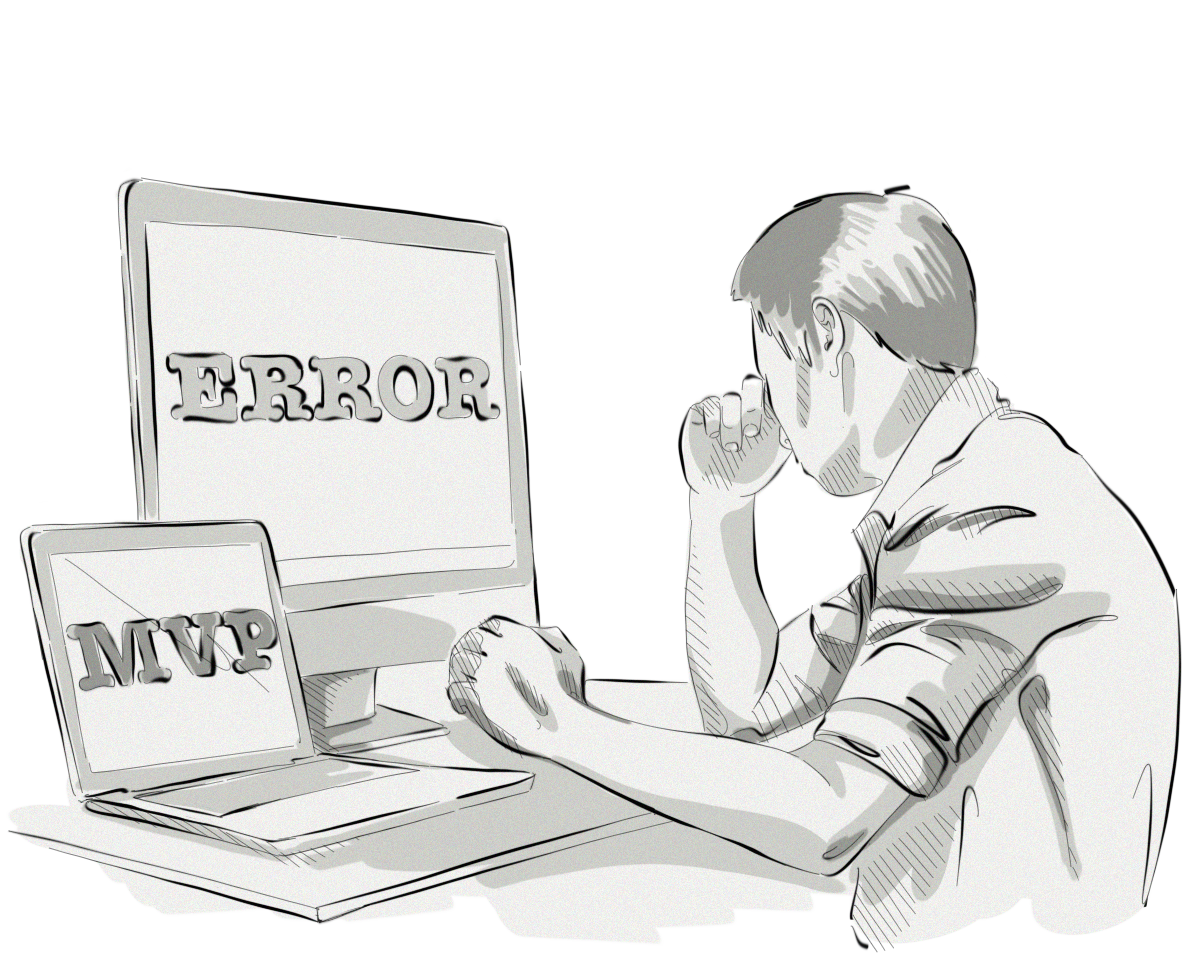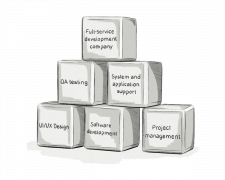When failure hits, it hits hard, and although it is considered by many just a part of the learning process and a step closer to success, if you can avoid it altogether, then surely that’s a better option.
Failure within the startup environment is common, and while there may be any number of factors that contribute to the defeat of a given startup, there are a few main areas that determine whether the large majority of MVP projects succeed.
The following three points have a huge impact on the outcome of an MVP project and should be avoided at all costs:
1. Hiring the Wrong Team
If you lack the required technical skills to effectively develop, launch, and support your MVP – or simply lack the manpower – then finding a technology partner who is able to deliver all the required technical aspects is an important ingredient in your MVP’s success.
When it comes to hiring a team, startups usually make two common mistakes – they choose the cheapest option, and they don’t hire a full-service team.
Opting for the cheapest option to design, and dare I say, develop their MVP, is a common mistake most startups make. Your MVP is the foundation of not only your application, but your business; therefore, choosing the least expensive option available when aiming to produce a quality product is a surefire way of ending your startup career before it’s even started.
A common misconception about MVPs is that it they can be built by just a handful of developers and a graphic designer. Building an MVP is just like building any other piece of software, however, and therefore requires the services of a number of different departments – UX/UI designers, developers and Q&A testers, project managers, and sysadmins.
Even though MVP development time is only about three to four months, there are many crucial crossover points (e.g. from design to development) that require cooperation from the whole team to ensure a smooth course of development.
Finding a full-service technology partner who is able to deliver all the required technical responsibilities and skills needed to plan, design, and build an MVP is a key element of early success.
2. Skipping the Planning and Prototyping Phases
Both the planning and prototyping phases are instrumental in the success of your MVP, and even though they may take about a month to complete, they are extremely worthwhile and save a considerable amount of time in the long run.
The Planning Phases
Planning an MVP is a two-part process:
First, you have to create a plan for your MVP by identifying your target audience, analyzing the market you wish to enter, deciding how you will raise the funds needed to build your MVP, listing the features you wish to include, and finding the right technology partner.
The second part involves your technology partner planning your MVP and focuses on laying down its foundations, minimizing risk, and removing ambiguity. There will be a number of documents that your technology partner will provide you:
Needs and Requirements Analysis
To truly understand your vision, the needs of users, and the goals of your MVP, your technology partner should perform a needs-and-requirements analysis. This document will outline all of the requirements you mentioned during the communication and technical discussion stages and will describe the goals of your project.
Research and Development
Another part of planning is the Research and Discovery phase, which describes the roles of the end users and presents a flowchart that maps out your application’s overall structure as well as the user journey.
Scope of Your MVP
Depending on the complexity of your MVP project, your technology partner may create a couple of alternatives that describe possible paths for developing your MVP. On the other hand, they may just propose one path to development. Either way, once a plan has been chosen, your technology partner will work with on defining the feature sets and provide development-time estimates for each task and component.
Prototyping Your MVP
Prototyping is more than just making the MVP look pretty, it’s about putting an interactive application into the hands of your initial users, showcasing it to investors, and setting it up for development.
There are a number of stages that make up an application’s prototype, and all of them play a role in the design and development process. Some of the main areas of prototyping are:
Interface architecture: This focuses on building the base structure, as well as the information and interaction foundation of your application.
Low-fidelity interactive prototype: This consists of low-fidelity wireframes that map out your application’s information architecture and shape and include interactive elements.
High-fidelity interactive prototype: Your prototype will now include high-fidelity graphic images and will have a number of interactive elements that allow you to navigate your application.
Production design: This is the last stage of your prototype’s lifecycle. By this phase, all of the feedback, from you as well as your users, will have been implemented. In order to make the transition into development smoother, your prototype’s graphical elements will be prepared for development.
3. Choosing the Wrong Development Method
There are several methods that developers can use when building an MVP. For the most part, they can be categorized into two different methodologies – Agile and Waterfall.
When it comes to software and MVP development, the agile methodologies are far superior to the waterfall (traditional) method, not just in success rate, but also in the ability to deliver high-quality, working software within the desired time frame.

Another area of the development process linked to software development is the payment method. Companies that build software according the agile methodologies generally offer their services based on the hourly-rate model, whereas those that follow the waterfall method usually offer services based on the fixed-bid model.
Although payment structure may not seem like a contributor to the success or failure of an MVP project, it can certainly have devastating effects on the development process and relationship between the client and development team, which in turn can lead the project to fall flat on its face.
To learn more about the MVP process and find out how to successfully plan your MVP, download our FREE Guide: How to Build MVPs with Rapid Prototyping by clicking on the image below.







